SHTFDad may collect a share of sales or other compensation from the links on this page.
Another morning on the deck and another day I’ll be a big softy and let the pooch have a few extra minutes warming her old bones in the sun.
Glorious thing that sun because it gives us heat, light, life. But she does have a moody side in the form of a Coronal Mass Ejection (or CME).
What is a CME anyway, and should I really care?
So let’s take a look at what this big gal can have in store for us.
What is a CME?
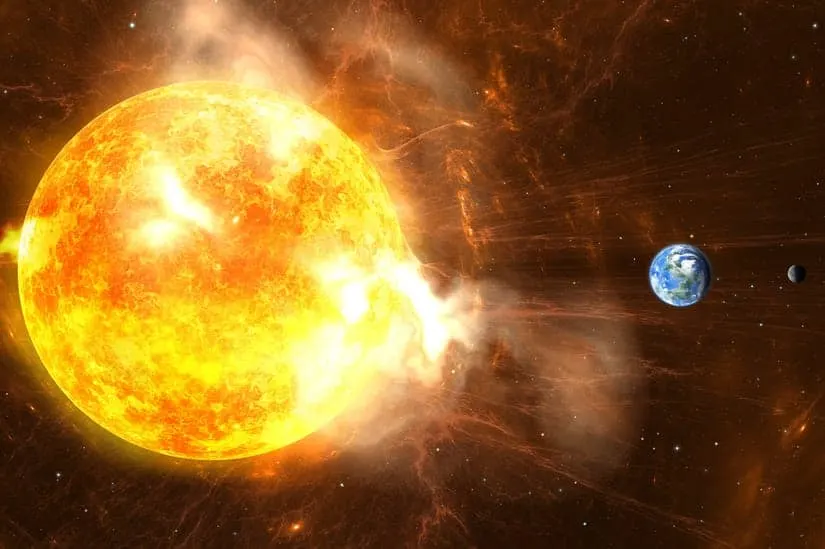
In short, a CME is a big burst of matter from the sun. It can give us the northern lights or much more tragic results. But we’ll get to that later.
For as stable as it looks from down here, the sun is very dynamic. The sun is teeming with activity. It is literally boiling with plasma, a super-heated and electrically conductive gas.
Normally, complex magnetic fields that dance across the surface of the Sun keep this plasma contained.
Occasionally the magnetic field lines become twisted and tangled causing an increase in potential energy. These locations are visible as sunspots or (queue Sting and The Police) a little black spot on the sun.
Mostly, the pressure builds and then ebbs with the magnetic fields collapsing back to the sun’s surface. With some regularity, the pressure builds and the magnetic fields climb and separate. This has the effect of releasing the pressure in the form of a solar flare with accompanying CME.
Alternatively, vast regions of the sun’s surface can open up as the sun’s corona thins. The lower density of plasma results in weaker magnetic fields. This combination creates a solar wind of particles that emanate from the sun and race out into the solar system.
While pretty (in the auroras they generate), they tend not to be concerning.
Solar Wind, Solar Flare and CME
What is solar wind? The constant flow of particles from the sun out into the solar system. Of course, this simplistic solar wind definition leaves out a few minor details like solar flares and CMEs.
A solar event from a sunspot has two main components:
- Solar Flare
- CME
The solar flare component is a broad-spectrum release of electromagnetic energy. This can include gamma rays, UV light, visible light, radio frequencies, all the way up to X-Rays.
This energy expands from the sun at near the speed of light. As much of this energy is not visible light, seeing them via a telescope or the naked eye is not possible.
In contrast, a CME is made up of billions of tons of plasma particles. They billow out from the sun in a plume that, depending on the orientation of the source sunspot, can be seen with a telescope.
CME Early Warning System
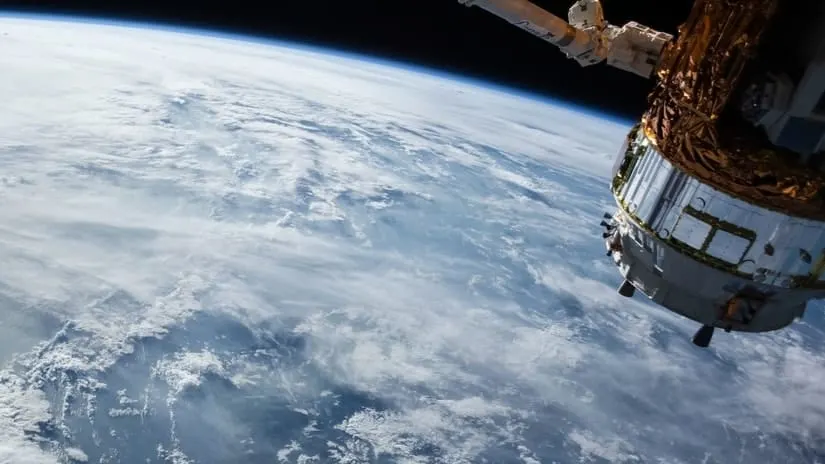
NASA has placed several satellites in orbit between the earth and the sun (“SOHO”, the Solar & Heliospheric Observatory) and along the earth’s orbit around the sun (STEREO A and B).
The SOHO satellite sits between the earth and the sun (where the gravitational pull of the two are equal) and it primarily measures the solar wind. Its position provides the earth with a brief warning of impacting events.
Separated along the earth’s orbit around the sun, STEREO A and B provide a stereoscopic view of the sun and any CMEs. This gives NASA valuable information about the direction of CMEs that would not otherwise be apparent in the view from a single source.
Unfortunately, contact with STEREO B was lost in 2014 leaving a gap in our space weather detection and prediction abilities and accuracy.
This detection systems aid in tracking solar flare activity and predicting potential solar storms and solar flares today.
CME Timeline
Once the prominence above a sunspot collapses and releases a solar flare (sometimes called a sun flare) and a CME we have a limited time to prepare for the impact on Earth.
Moving at the speed of light, the broad spectrum of energy from a solar flare can make the trip from the sun to our upper atmosphere in just over 8 minutes. The duration of a solar flare can last from less than a minute to tens of minutes.
The particles from a CME can vary widely in speed and do not travel nearly as fast as the speed of light. Therefore, a CME can take between 13 hours and a maximum of 80 days to reach the earth.
The average CME makes the trip in about 3 days. The faster the CME the more energy, and therefore greater the punch it has.
I will discuss in a little bit the potential impact of a CME and a solar flare, however, with these speeds, we will get a little warning to prepare.
The timeline of a solar flare and our observation satellites will give us about 4 minutes of warning before an impact. For our Government, this provides them with enough time to protect our satellites.
For a CME we can get at a minimum 12 hours of warning, or possibly many days. In general, the slower the CME the less danger it presents.
Historical CMEs and the Probability of the Next One
Ok, so the sun lets off a little steam once in a while. Should I really care? Well to answer that question we must first answer two others:
1. Can they really affect us?
AND
2. Do they happen often enough that I may be impacted (pun intended)?
Question number one I will answer in a bit. As for question two let’s look at the history books.
The Carrington Event
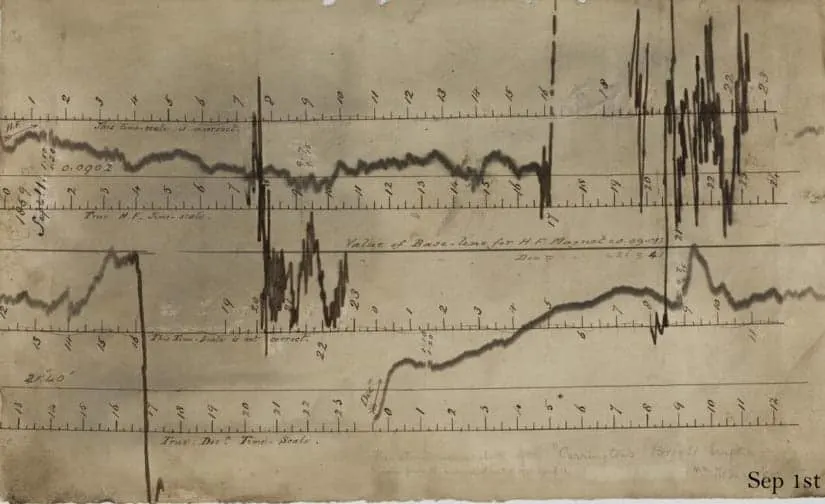
In August to September of 1859, Richard C. Carrington observed a long-duration white flash around a sunspot. Some 17 hours later the CME hit the earth with spectacular effects.
This was the first time a solar flare was recorded and subsequently associated with the earthly effects. For example, the Aurora Borealis and an EMP event that disrupted our fledgling electrical infrastructure, among other effects.
Forever associated with this event, it carries Carrington’s name to this day as every prepper worth his or her salt is aware of and prepares for something similar to it.
Other Major Solar Events
More recently in 2012, an event of similar magnitude was observed. This time we were a tad luckier as due to the rotation of the sun it missed us by nine days.
Had this one hit, you would not be reading this on the internet now. We would still be “picking up the pieces,” says Daniel Baker of the University of Colorado.
Baker and colleagues at NASA and various universities wrote the pioneering paper “A major solar eruptive event in July 2012“. The paper describes our near miss with a massive CME on July 23, 2012, that would have been catastrophic had it indeed hit us.
Other CMEs of significant magnitude, although not nearly at the level of these two biggies, have impacted us in 1921 and 1989. The 1989 storm took out the electrical grid of Quebec, Canada.
So we have been hit in the past, does that mean that we will be hit in the future?
In short, yes. The sun, just like Earth, has seasons. In this case, the seasons are the number of sunspots on the sun. Every 11 years the sun cycles through peaks and valleys of the count of spots on the sun.
Simply put every eleven years there are lots of sunspots and therefore lots of solar flares and CMEs. Both the Carrington event and the July 2012 event happened near solar maximums.
The next solar maximum will likely happen around 2022.
According to Pete Riley’s seminal research paper published in Space Weather on February 23, 2012, titled “On the probability of occurrence of extreme space weather events“, Earth has a 12% chance of being hit by a Carrington level event by 2022. Not exactly betting odds but enough to scare the hell out of me!
CME Effects
So, back to question number one. Can a CME really affect us?
The initial impact of the solar event is the burst of electromagnetic energy from the solar flare. The primary effect is upon communications.
Our non-satellite communications (think high-frequency HAM signals) rely on specific conditions in the ionosphere. The impact from the flare degrades the conditions required for these communications which can result in a communication blackout.
The primary concern is the coronal mass ejection, the CME. The charged particles that follow the flare by several hours to days and impact the Earth’s magnetic field.
If we are lucky the magnetosphere holds up to the assault and protects us from further insult. If the magnetic field is weak or the CME is too strong then we will feel the effects a little closer to home.
Just as a side note. Our magnetosphere is currently weakening as our magnetic poles are wobbling and preparing to flip in the next few decades.
Auroras

The CME induces a charge in the atmosphere that has a myriad of effects. The most visible is the Aurora Borealis. Also called the northern lights, we can usually only see this heavenly show in the northern latitudes.
It is said that following the Carrington Event the northern lights were bright enough to read a paper by in the northern latitudes. They were even visible as far south as Texas and Mexico.
Electrical Grid
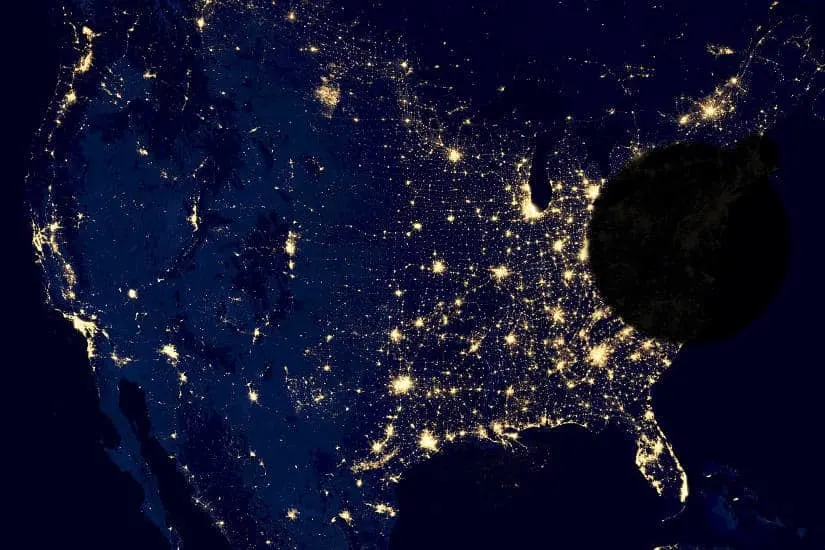
While the sky’s light up, our electrical grid gets a much rougher treatment.
The charge in the atmosphere seeks a path to ground. It collects on any conductive surface. This includes, most troubling, long wires of our communications and electrical infrastructure. Within a few milliseconds, the charge builds and races through the wires.
During the Carrington Event, the only meaningful infrastructure was the telegraph system. Enough charge was introduced into the wires to heat and sag them to the point of failure. Likewise, some offices caught fire and were destroyed due to electrical sparking in telegraph machines.
Today we have a much more developed, much more extensive, and much more fragile electrical system. Consequently, there are uncountable wires stretching across the country from high tension transmission wires to local cable and telephone wires. Each of these is a literal antenna that soaks up the charge and passes to the connected electronics.
In comparison to today, the electronics of 1859 were big, bulky, and could handle many volts of induced charge. Today we design microcomponents that handle thousandths of a volt. Anything larger and the component is toast.
The ramifications of this are profound. Moments after the impact of a CME our entire electrical grid would be on the brink of failure. From transmission lines to transformers to power generation SCADA systems.
All parts of our electrical grid would fail. While many of the transmission’s wires can be replaced (albeit not easily), the transformers are a different story.
Electrical Transformers & Substations
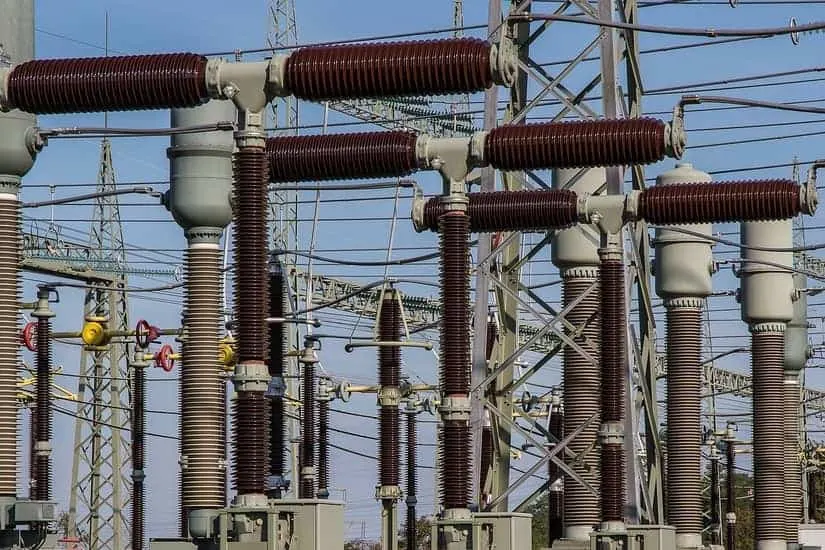
Transformers step our energy up or down facilitating movement across vast distances. Each one is specifically designed for a particular scenario. They are large, weigh many tons, and are custom built. We don’t keep any spares.
Even worse, manufacturing of this highly specialized equipment has moved overseas. With a completely working infrastructure, they can take years to be built, delivered, and installed.
Without a working infrastructure. Well, it’s a little more complicated.
Other Electronics
Even disregarding the impact to smaller electronics like cars, cellphones, pacemakers, and SCADA controllers, we will be in a world of hurt. Without electricity, the world will be dark, cold, and lonely. The lack of power will rob us of light as well as movement.
No power, no gas. No gas, no transportation or shipping. Without power, we will not be able to heat our homes (unless you have a wood stove, two-person buck saw, and a splitting wedge). Finally, without power, all those friends and family that are farther than walking distance will suddenly be people that you used to know.
Hospitals, modern health care, and sanitation will become a thing of the past as disease, injury, and death will rule. Even the management of the dead will be difficult without machinery to dig the graves.
CME Protection
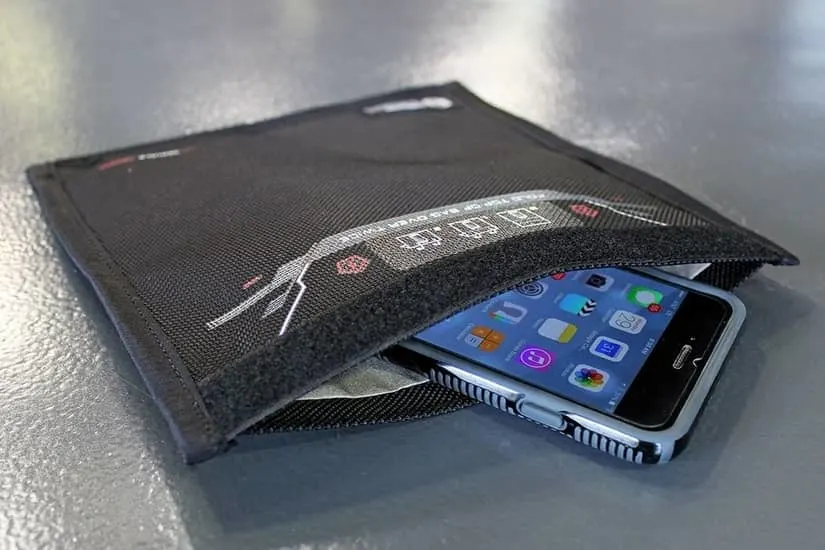
We are not without hope though. We can take proper precautions by storing and protecting our sensitive electronics. The key is the correct construction of a Faraday Cage.
A Faraday cage (or Faraday bag) is a container made of conductive material in which you place your sensitive gear. This can be a metal garbage can, Mylar bag, or metal drum or even a metal lunchbox.
The conductive container allows the charge to congregate on the surface and go around the contents. The key is the box must be 100% sealed. The tiniest hole will allow the destructive charge into the box and affect the contents.
The seal can either be metal on metal contact, a layer of tinfoil, or metal ducting tape over any seams. The second key is that the equipment on the inside cannot touch the container. This can be accomplished with a thin layer of cardboard or any other insulating material.
Within your Faraday cage or bag place your spare COMMs gear, NVGs, computer, etc. Just be aware that more than one CME may be coming toward earth, or the CME may last many hours or days. So, don’t be too eager to pull out your gear too quickly.
Frequently Asked Questions
What is a CME?
A CME, or coronal mass ejection, is a blast of charged particles from the sun. This can either come from a hole in the sun’s surface or more spectacularly from a sunspot.
Has a major CME hit the United States in the past?
In 1859 an enormous CME was noticed and recorded by Richard Carrington. Due to the significance of the event, this was the first time that solar activity was tied to events on earth.
What effect did the Carrington Event have on the United States?
The early telegraph wires and buildings caught fire due to the induced charge, likewise, the northern lights could be seen as far at Texas.
Has a major CME hit the United States recently?
No, but in 2012 a Carrington level event missed the earth by 9 days. Experts have estimated that if that had hit us, you would not be reading this now.
Final Thoughts
So, I’m back to reality, sitting on the deck, watching the sun as it peaks over the mountains. She is a pretty sight at this time of the morning.
It’s a shame that she can have a temperament and put us in our place (just as we are reaching the pinnacle of civility Ha!!).
Well, the woodpile calls, and I should mentally rehearse my plan if Space Weather announces that a solar storm today will change my life. God speed my friends. Make use of the time we have!
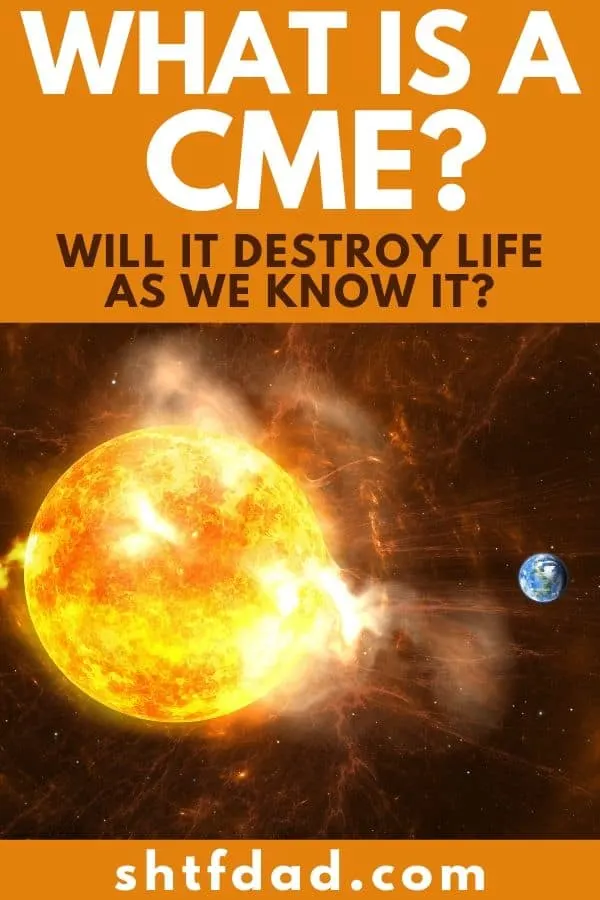
Resources:
